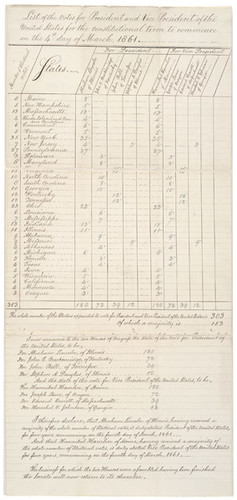Challenge Library Guide: What are Primary Sources?
Using Subject Headings to Find Books
PSU Library has a large collection of reprinted or microfilmed primary source materials, including the collected writings of historical figures, government documents, diaries, collections of speeches, etc. The best way to find primary sources in the library catalog is with subject headings. You may have to try several searches, but one strategy is to combine a keyword for your topic with a subject heading for a material type (see list at right).
Use the advanced search function in the Portland State Library Catalog
- In one search box, enter some keywords about your topic
- In another search box, use an official subject heading related to primary sources. You may have to try a few different ones

What is a primary source?
 Primary sources enable the historical researcher to get as close as possible to what actually happened during an historical event or time period. A primary source reflects the individual viewpoint of a participant or observer. Here are some examples of primary sources:
Primary sources enable the historical researcher to get as close as possible to what actually happened during an historical event or time period. A primary source reflects the individual viewpoint of a participant or observer. Here are some examples of primary sources:
- Items that describe events where the author is a participant or observer, such as diaries, letters, memos, journals, speeches, and interviews. Example: Diary of Charles Rumley from St. Louis to Portland, 1862
- Photographs, audio and video recordings, and other electronic records that record an event. Example: Oregon Politics Radio Disc Collection [sound recording], 1938-1958
- Records collected by government agencies such as birth and death records, marriage records, voting tallies, land deeds, and census data. Example: 15th census, population, 1930. Oregon
- Records created by organizations or agencies, such as reports, minutes of meetings, and bylaws. Example: The dawn of British trade to the East Indies as recorded in the Court Minutes of the East India Company, 1599-1603
- Memoirs and autobiographies. Example: Autobiography of Samuel L. Campbell, 1824-1902 : frontiersman and Oregon pioneer : together with his summary of the Whitman Massacre.
- Material published at the time of an event, such as books, newspapers and magazine and journal articles. These are distinguished from secondary sources because they are contemporary. Example: Jones, W. F. D. "An Oregonian Poet Hermit." Overland Monthly and Out West Magazine, V. 25, issue 148, April 1895, pp. 75-378.
- Data collected by researchers, such as field notes, results of experiments, and measurements. Example: Climatological data. Oregon.
Image credit: Electoral Vote Tally for the 1860 Presidential Election, 1861 (page 1 of 3) by The U.S. National Archives, via Flickr
Primary Source Subject Headings
What is a subject heading?
Subject headings are a formalized way of of searching library catalogs. The right subect heading can help you get to information more quickly.
For example, the American Revolutionary War can be described using the following terms:
- American Revolution
- American Revolutionary War
- War of the American Revolution
- American War of Independence
- War of American Independence
- War of Independence
You could search the library catalog for all those keywords. Or, use one subject heading to find all of the library's materials about the the American Revolutionary War:
United States -- History -- Revolution, 1775-1783
Searching for primary source materials by author
Materials written by a person (or an organization) are considered primary sources for research on that person. Search the catalog for a historical person's name, and then click on their name to find everything they have written.
Who determines subject headings? The Library of Congress. Copies of the complete set of the Library of Congress Subject Headings are available at the Reference Desk.

